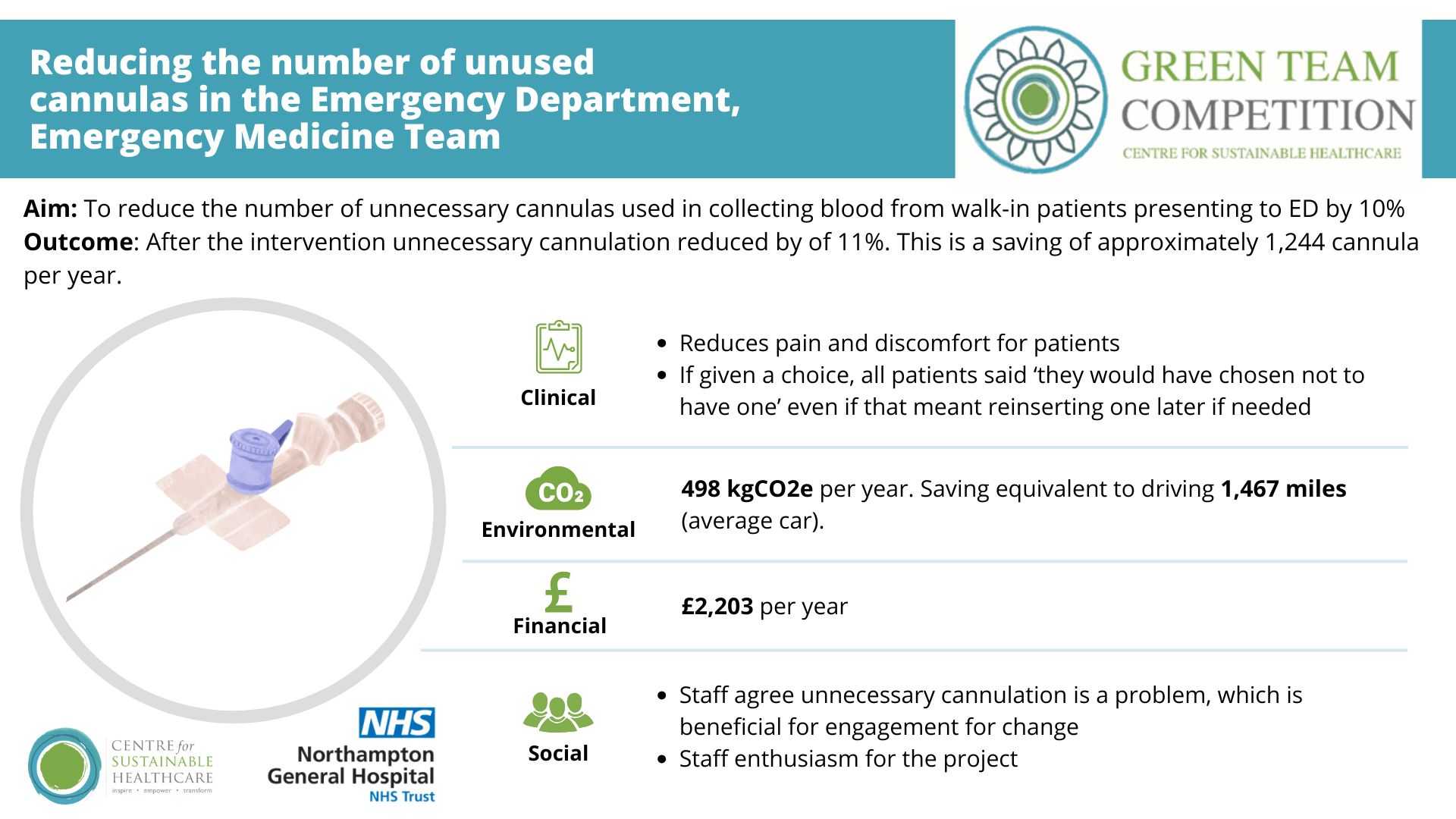Project completed as part of the Northampton General Hospital NHS Trust Green Team Competition 2024-25.

Team members:
- Sriram Boppana, Junior Clinical Fellow, Emergency medicine
- Rana Goadar, Junior Clinical Fellow, Emergency medicine
Setting / patent group: Emergency department
Issue:
Many intravenous (IV) cannulas fitted in patients in the emergency department (ED) are inserted to take bloods at admission and then not used again after that for fluids or medications. Reducing these unnecessary cannulations is supportive of environmental, financial and social resource stewardship. Each cannulation requires over 10 single-use items, whereas, alternatively, collecting blood via a butterfly requires 6 items. Cannulation also can be uncomfortable, lead to adverse effects such as localised pain and bruising and increases the risk of complications such as hospital-acquired infections.
Intervention:
Emergency department staff at Northampton General Hospital agreed that unnecessary cannulation is a problem. The intervention was to reduce the number of unnecessary cannulas used in collecting blood from walk-in patients presenting to A&E by 10% in 2 weeks, with an aim to reduce single-use plastics and ED CO2e footprint.
Outcomes:
- Environmental
By using butterflies instead of cannulas for collecting blood only, the amount of equipment being used will be reduced. This is measured by calculating the percentage of unused cannulas before and after the intervention. After the intervention, there was a decrease in the percentage of unused cannulas of 11% when compared to the pre-intervention data over a two week period. If this same reduction was applied throughout the year, and butterflies are used to collect blood instead of cannulas, this would sum up to a saving of 497.86KgCO2e.
- Social
Initial staff feedback was obtained through the initial survey and through informal conversations. Colleagues have been happy to use butterflies instead of cannulas when they think they are clinically appropriate. Formal data from patients has not been collected, but patients have previously stated that having a cannula is painful and they would rather not have one.
- Clinical
New guidance specifying 13 presentations that do not require a cannula was developed and promoted via posters in the department. However, this guidance was not being followed after a month due to some concerns about the guidance list and not noticing the posters in the busy emergency department. New guidelines were made by a consultant team and discussed in monthly meetings, face-to-face conversations and training sessions. Minor changes to this list were developed in January 2025.
- Financial
The cost of a cannula is about £2.50 compared to the cost of a butterfly being £0.70. When the 11% savings is applied over 1 year, this will sum up to savings of about £2,203/year.
Key learning point:
Team engagement was key to driving change. Staff were open to changing practice once they were involved in the process and had their views and concerns acknowledged.
We aim to expand collaboration with other departments to amplify impact as unnecessary cannulation is not a problem unique to ED.
This initiative highlights the value of sustainable clinical practices and team-driven innovation, forming a strong foundation as we work towards Green ED accreditation and further environmental sustainability projects.
Please log in or sign up to comment.